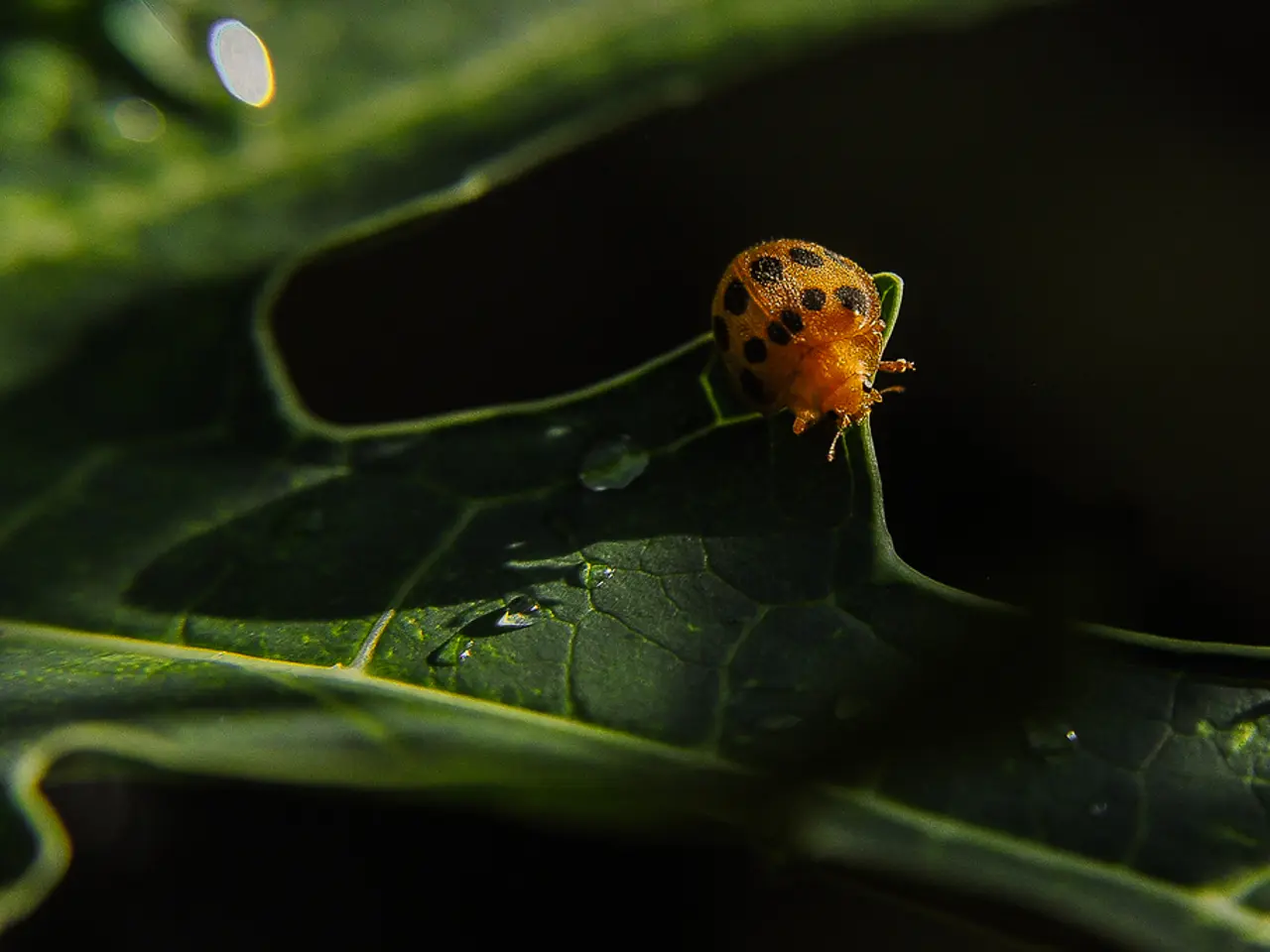Disease Characterized by Curling of Peach Leaves
Peach Leaf Curl, a springtime disease that affects peach, nectarine, and related ornamental plants, is caused by the fungus Taphrina deformans. This article provides guidance on effective control methods and prevention strategies for this disease.
The fungus survives the winter as spores (conidia) on bark and buds. Infection occurs very early in the growing season, particularly during cool, wet spring weather, when conidia infect new leaves as they emerge from the buds. Rain is necessary for infection. Once infected, host plant tissues are susceptible for only a short period.
Symptoms of leaf curl appear in the spring, with developing leaves becoming severely distorted, thickened, and puckered. Infected leaves turn yellow or brown and drop shortly after. The fungus produces another type of spore (ascospore) on the upper surface of the diseased leaves. As the tissues mature, they become resistant.
Effective control of Peach Leaf Curl mainly involves fungicide application during the dormant season (late fall to early spring before bud swell) to prevent infection. Dormant sprays of copper-based fungicides are highly effective at killing overwintering spores on the bark and buds, thus preventing the disease from developing in spring [4][3].
Additional control methods include good cultural practices. Pruning and thinning trees properly to provide good air circulation around peach trees helps reduce disease incidence [2]. Sanitation is also important. Remove all infected leaves, dead branches, and mummified fruit from the tree and surrounding area to reduce inoculum sources [2].
Use of resistant or tolerant peach varieties, although less emphasized in current sources, may also provide some protection. Spray fungicides only if the disease has been a problem in previous years to avoid unnecessary chemical use [3].
In summary, the most critical and effective prevention method is applying a copper fungicide spray during dormancy (before bud swell) to control overwintering Taphrina deformans spores and maintaining good tree hygiene and airflow to reduce disease severity [4][2][3].
Yield may be further reduced when blossoms and young fruit become diseased and drop. Rarely, flowers and fruit may also become diseased, dropping shortly after infection. Diseased fruit has shiny, reddish, raised, warty spots. Infected leaves have a reddish or purple cast and later become powdery gray in color. Diseased twigs become swollen and stunted, and may have a slight golden cast. They usually produce curled leaves at their tips.
This fact sheet was originally published in 2008. It is important to note that while this information remains valuable, it is always advisable to consult with a local extension agent or a certified arborist for the most current and region-specific advice on managing Peach Leaf Curl.
Pest management in controlling Peach Leaf Curl often employs scientific research, as proven by effective fungicide applications during dormancy. Proactively applying copper-based fungicides during this period helps curb the spread of overwintering fungal spores, a crucial step in pest management [4][3].
In the realm of health and wellness for peach trees, maintaining good hygiene and pursuing proper cultural practices significantly reduces the severity of Peach Leaf Curl [2]. Good air circulation, tree hygiene, and sanitation practices can contribute to healthier trees and limited disease spread.




